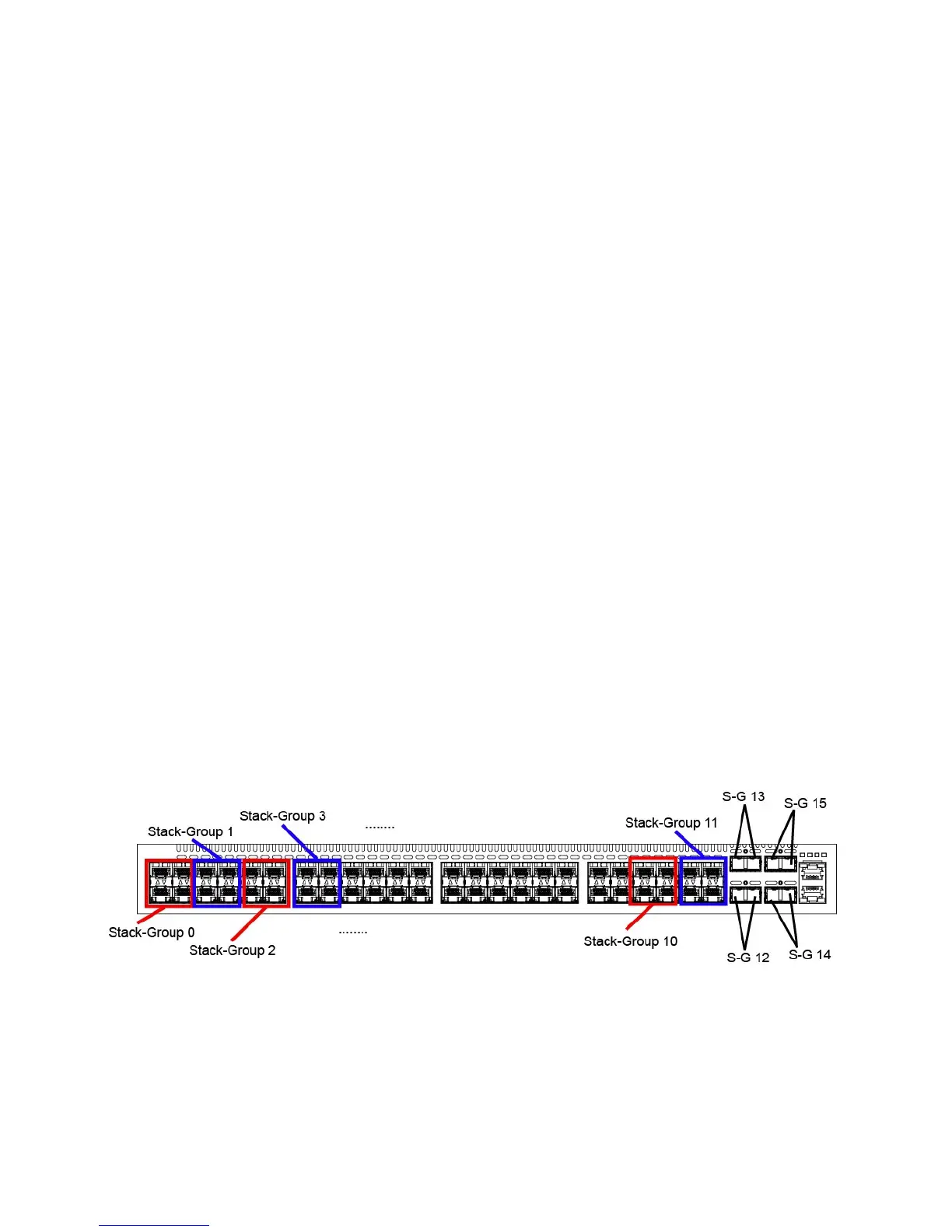980 | Stacking
www.dell.com | support.dell.com
S-Series Stacking Installation Tasks
• Create an S-Series Stack
• Add Units to an Existing S-Series Stack
• Remove a Unit from an S-Series Stack
• Split an S-Series Stack
Create an S-Series Stack
Stacking is enabled on the S4810 using the front end ports. No configuration is allowed on front end ports
used for stacking. Stacking can be made between 10G ports of two units or 40G ports of two units. The
stack links between the two units will be grouped into a single LAG.
Stack Group/Port Numbers
By default, each unit in standalone mode is numbered stack-unit 0. A maximum of eight 10G stack links or
two 40G stack links can be made between two units in a stack. The front end ports are divided into 16 stack
groups, each with 40G of bandwidth. Stack groups 0 through 11 correspond to 10G stack groups with four
ports each. Stack groups 12 to 15 are one 40G port each.
The front end ports accommodate SFP, SFP+ and QSFP+.
• Ports are divided into 16 stack-groups (0 to 15) as shown in the following example. The stack groups
must be of a single speed - either all 10G or all 40G.
• stack-group 0 corresponds to ports 0-3, stack-group 1 corresponds to ports 4-7, so on through
stack-group 11
• stack-group 12 corresponds to the 40G port 48, stack-group 13 corresponds to port 52, so on
through stack group 15.
Figure 47-7. S4810 Stack-group assignments
You can connect the units while they are powered down or up. Stacking ports are bi-directional.

